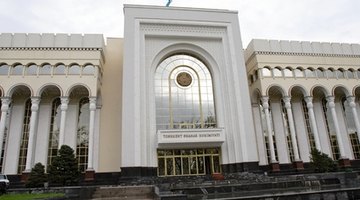School administration is the school's main governing body, and it plays a major part in making decisions related to students, faculty and the school's overall status. There are several types of school administration, depending on the school's nature. These administrations oversee the school's development as well as the welfare of its students and faculty. More often, they are also the only entity that bridges the relationship between the school and the community.
Preschools
Preschools are often small enough that a single supervisor or director together with its few faculty members can manage them. The administration of the school falls solely on the director, ensuring that the curriculum, finances and projects are done correctly. The director also participates in personally choosing teachers and staff, as well as ensuring that the school follows educational standards.
Elementary and Secondary School Administration
The second type of a school administration exists in elementary and secondary schools all throughout the U.S. A principal heads up most school administrations in this category. The principal's main responsibility is to serve as the school's representative and advocate in the community.
The principal also plays a major part in overseeing projects and other development to better serve the student body. Elementary school administrations, through the Parent-Teacher Association, also meet with parents to make sure that their children are getting the best education and services that the school can offer.
Even though the principal is the main point person in elementary school administrations, he often reports to a superintendent that is usually an officer of the Department of Education. The superintendent reviews and checks on all the school's under her jurisdiction, and she makes sure that the school's policies and regulations follow district policies.
College and University Administration
College and university Administrations are largely different from elementary and secondary school administrations; they are larger and have more specific functions since they manage a very large school community. The first major difference is that college and university administrations are headed by a president and a governing body that handles all aspects related to school management, like finances and projects.
Different Roles in a College and University Administration
Unlike the principal, the president is just one of the decision makers, and he is also assisted by chief academic officers, also known as provosts. The provosts play a major part in arranging meetings, developing budgets and reviewing academic curricula. A dean leads each department of the university or college and manages the department and works hand in hand with provosts to make sure that the department's goals are in tune with the university's goal.
College and university administrations also have a separate department for specific functions, like a department for student affairs and finance. A dean or administrator head these departments, and their role is to make sure that the university implements the department's policies and regulations.
Related Articles
References
Writer Bio
Steve Johnson is an avid and passionate writer with more than five years of experience. He's written for several industries, including health, dating and Internet marketing, as well as for various websites. He holds a bachelor's degree from the University of Texas.











